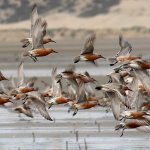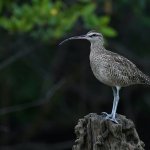April 21st was World Curlew Day – a grassroots initiative to raise awareness of the plight of curlews (Numenius), and to celebrate them as iconic birds of wild, wet, evocative places – estuaries, mountain slopes, moorland, meadowland and coast. Of the eight species of curlew in the world, five are considered globally at risk of extinction according to the IUCN Red List, with two of them quite possibly already extinct. To mark this somber occasion, here we share a personal account of the last recorded sighting of Eskimo Curlew Numenius borealis in South America, by Pablo Michelutti, a park guard at Mar Chiquita, Córdoba, Argentina. In Pablo’s words:
North of the town of La Para, the coastline of Mar Chiquita is a unique mix of sandstone cliffs up to 14 meters high, extensive sandy beaches and “cardonal” woodlands, with abundant wildlife. The area is known by the name of an old settlement and hotel at the site, “Mare,” which now lies in ruins.
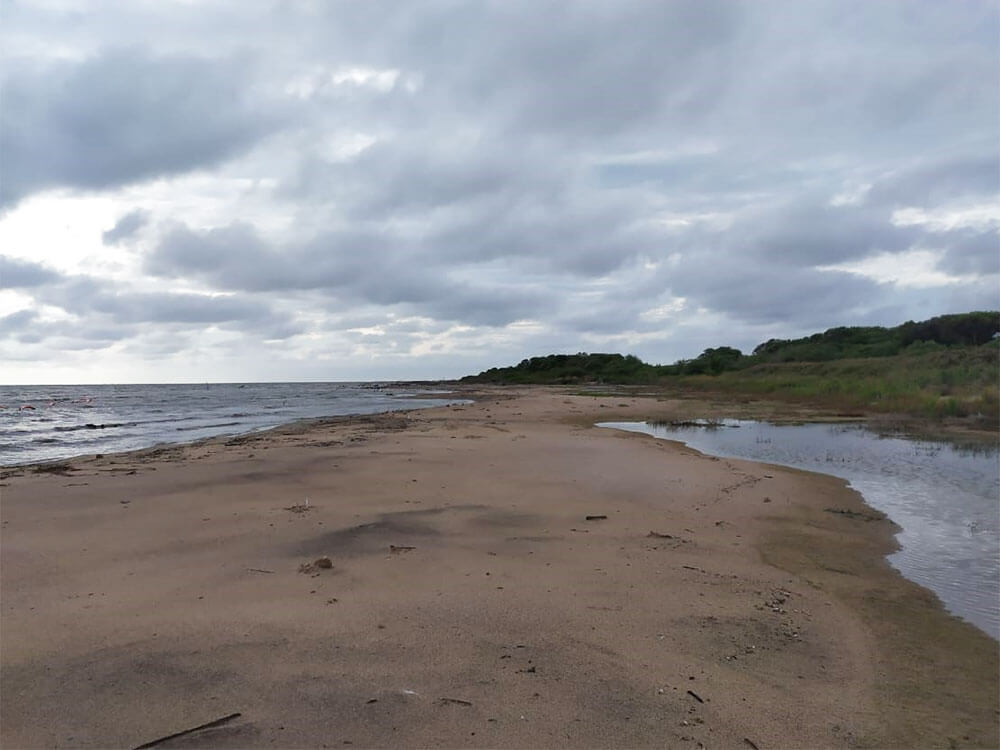
The shore in Mar Chiquita, in the area known as Campo Mare. This is one of the few areas in Mar Chiquita that has sandy beaches and native forest patches. Photo credit: Marcela Castellino.
As part of my regular monitoring activities of the reserve, I visit this area at least once a month. Arriving on 13 August 1990, I was surprised not to see any birds on the coast. Gunshots coming from the East were a likely explanation, and as I headed in their direction, I picked up “downed” individuals of various waterbird species, such as stilts and ducks. There were so many that soon I couldn’t carry any more.
Finally, I caught up with three people, one of them armed with a shotgun, who were not pleased at my presence and couldn’t justify their actions. After convincing them to leave, I continued walking towards the end of the peninsula. From there I headed west, to a lagoon formed by the wells of the old hotel, nestled between dunes and the coast.
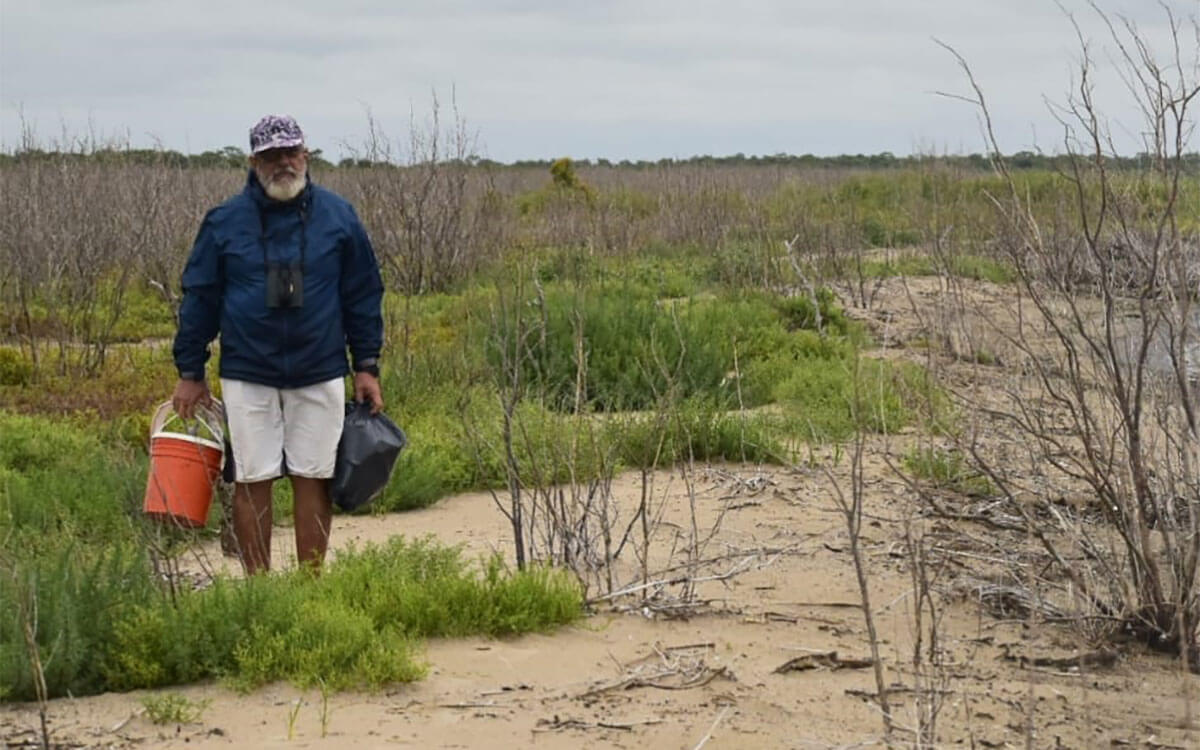
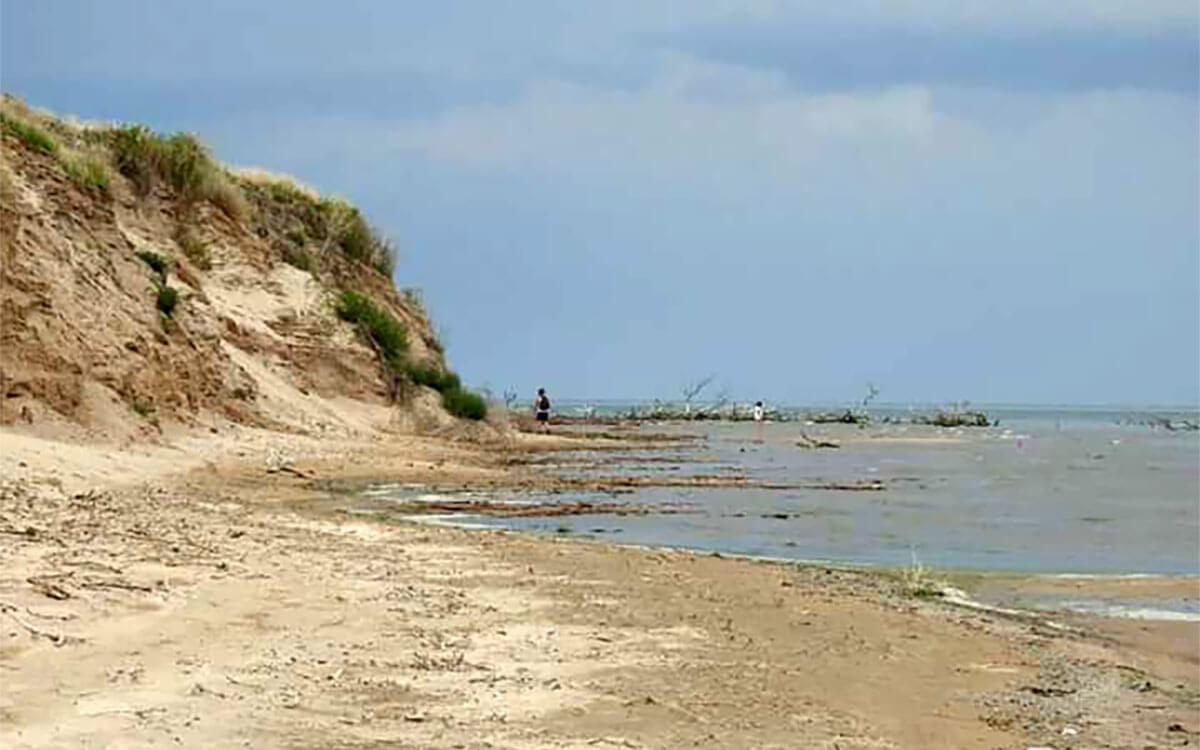
Left: Pablo Michelutti, a park ranger at Mar Chiquita for more than 30 years, during one of his last field trips to count shorebirds. Photo: Yanina Drueta. Right: Coastal fossil sand dunes on Campo Mare area. These sand dunes can measure up to 14 meters high. Photo: Matías Michelutti.
As I approached the lagoon, I could see congregated all the birds that I’d expected to see on the coast. Among them, towards the upper edge, were four shorebirds that immediately stood out as a species I’d not seen before, distinctive in their size, shape and coloration. I was about 20 m away from them, and they were clearly agitated and ready to fly, so I laid down on the sand to hide myself as much as possible. I studied the birds carefully through my 8×50 binoculars, taking notes and drawing them. Above they were brown, and pale below, with a brown crown and notable white supercilium. The bill was medium to long and dark, and the legs grey. I compared them in size to Black-necked Stilts and yellowlegs. Suddenly they seemed to notice my presence, and took flight, without uttering a call.
Of the species that occur at Mar Chiquita, the most similar is Upland Sandpiper (Bartramia longicauda), but it’s smaller and more barred, with a shorter bill, and a longer-necked and smaller-headed appearance. It’s also very unusual to see it on beaches, but is common in natural and implanted grasslands. Given that by the date of my observation Eskimo Curlew was already considered practically extinct, I was extremely cautious about claiming the record. I first consulted with specialists, including the naturalist Dario Yzurieta (and illustrator of the Birds of Argentina and Uruguay), who lived in the area at the time, and also checked literature before deciding to publish the record.
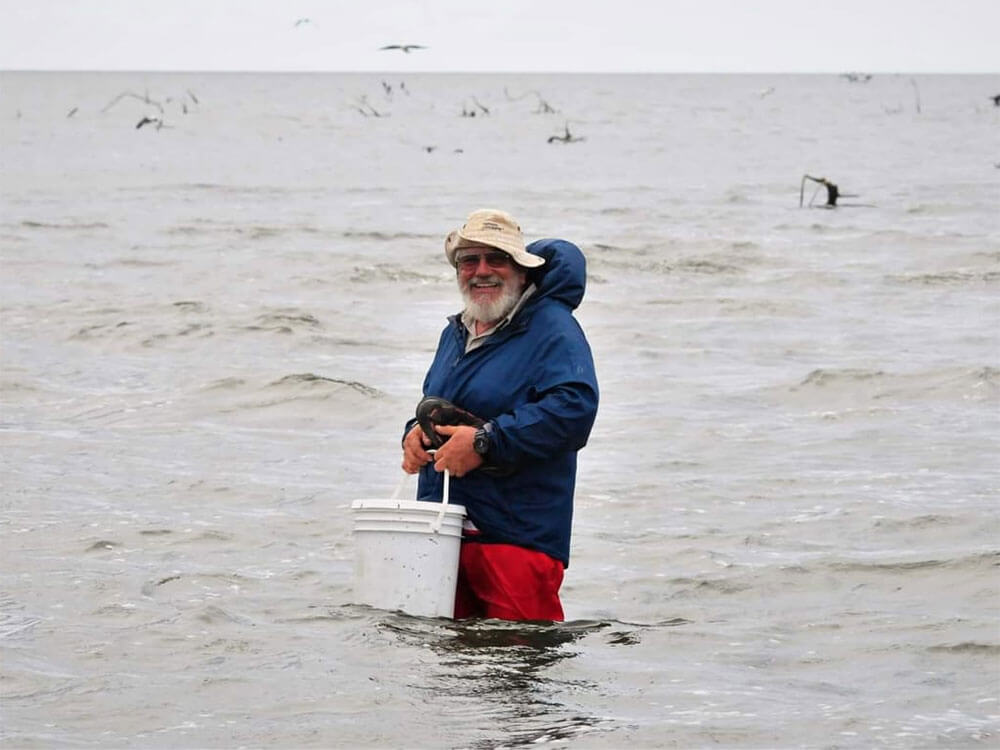
Pablo Michelutti, a park ranger at Mar Chiquita for more than 30 years, during one of his last field trips to count shorebirds. Photo credit: Hugo Giraudo.
At least these four individuals were able to add one more day to their lives – my arrival perhaps saving them from the hunters. Fortunately, today, there are more people who enjoy and respect the nature of Mar Chiquita, taking care to protect and share the beauty of the area and the species it supports. Unfortunately, it seems likely that the Eskimo Curlew is no longer among them.
Pablo Luis Michelutti, Park Guard and representative for Mar Chiquita to the Argentine WHSRN Council, 1990.
Cover Image: Drawing of the four Eskimo Curlews made by Pablo Michelutti, on the same day of the sighting.





